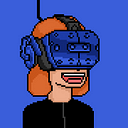Latest Innovations in the Multibillion-Dollar Sleep Tech Market
The sleep tech devices market has seen unprecedented growth in the last years. With a rise in sleep disorders, advances in technology are helping people monitor and improve conditions such as sleep apnea, narcolepsy, and insomnia.
About 44% of Americans aged 65 and above are diagnosed with some kind of sleep disorder, and 22 million people in the US suffer from obstructive sleep apnea.
The sleep tech devices market was worth $11.79 billion in 2018 and could reach $26.62 billion by 2025, with wearables such as smartwatches and bands being the most lucrative segment.
These trackers play a crucial role in monitoring sleeping patterns and data, and people are particularly attracted by them because they are portable and can be used from the comfort of their homes. The sleep tech market also includes sleep monitors, pads, earplugs, smart pillows, and beds.
This generation of sleeping gadgets can help an aging demographic track their sleep, achieve relaxation and body soothing, and even control temperature, light, and sound for a better slumber. In some cases, it can even save lives.
The sleep tech sector, supported in large part by neuroscience research, will see increased adoption in homes, hospitals, and care settings. Below are some of the biggest players driving innovation.
MIT BodyCompass
MIT has developed a wireless device that can capture sleep postures without cameras or body sensors. The BodyCompass uses a small device mounted on the wall to reflect radio signals and capture accurate sleep data that can be useful for dealing with different disorders.
Just like a Wi-Fi router, the gadget sends and collects signals that are then mapped in paths to determine a person’s posture. In order to figure out which signals are bouncing off the body, the device uses the modulations caused by breathing. The data is then analyzed by a customized neural network that can infer the position according to the angles.
When combined with an alert or intervention system, BodyCompass could potentially save patients’ lives. Studies have shown that for people with epilepsy, sleeping on one’s stomach can increase the risk of sudden death. The device is also useful for monitoring Parkinson’s disease and treating bedsores and sleep apnea — both conditions that can be alleviated by changing one’s posture.
BodyCompass allows people to monitor their sleep without having to worry about forgetting to put on a wearable or having to recharge batteries. Researchers are also working on mattresses that can slowly turn a patient to avoid dangerous positions, a very promising pairing.
Amazon Halo
Amazon is developing a wristband that combines artificial intelligence (AI), computer vision, and machine learning to provide a complete view of a person’s health and wellness. The Amazon Halo Band (and connected app) uses multiple advanced sensors to measure highly accurate data. It also includes an accelerometer, a temperature sensor, and a heart rate monitor.
The Halo suite has five core features, among which are intensity and duration of movement tracking, body fat percentage measurements, voice and tone analysis, and an offer of science-backed challenges called “labs.”
In terms of sleep, the Amazon Halo measures time asleep and time awake using motion, heart rate, and temperature. It can also differentiate between the different phases of sleep, including deep, light, and REM. Because the tracking is continuous, customers get detailed data without changing the band — which also happens to have a battery that lasts about seven days and recharges in 90 minutes.
The measurements of sleep patterns are shown in baseline sleep temperature graphics and hypnograms. Customers can download their data directly from the app any time, and body scans are deleted from the cloud after processing — ensuring privacy.
What’s Next for Sleep Tech
It’s estimated that one in three adults doesn’t get the commended minimum of seven hours of sleep per night.
It’s hard to know whether one is under or overestimating this duration without a sleep tracker. The recently presented ScanWatch, for example, is the world’s first clinically validated hybrid smartwatch to detect both risks of arrhythmia (AFib) and sleep apnea.
Monitoring is the first step in changing sleeping patterns, but what follows is equally important. Several innovations are dealing with this part of the problem.
The Tenminds motion pillow analyzes a person’s head position and breathing patterns and then adjusts its shape to shift the angle and provide better airflow. The URGOnight Sleep Training Band trains the brain to produce the brainwaves clinically associated with sleep. And the Climate360 smart bed creates a responsive microclimate and adjusts firmness automatically. The Philips SmartSleep and Wake-Up Light can also simulate a sunrise, along with soothing nature sounds or background music.
The sleep tech devices market is expected to register a CAGR of 15.5% over 2020–2025, with North America being a dominant region due to a higher prevalence of sleeping disorders and a rising geriatric population.
Helping people get a better night’s sleep can significantly improve their quality of life, and these technologies will continue to inspire the coming generations of innovative gadgets.
This article was originally published in Startup Savant on Sunday, October 4, 2020. Link: https://startupsavant.com/news/sleep-tech-innovations
